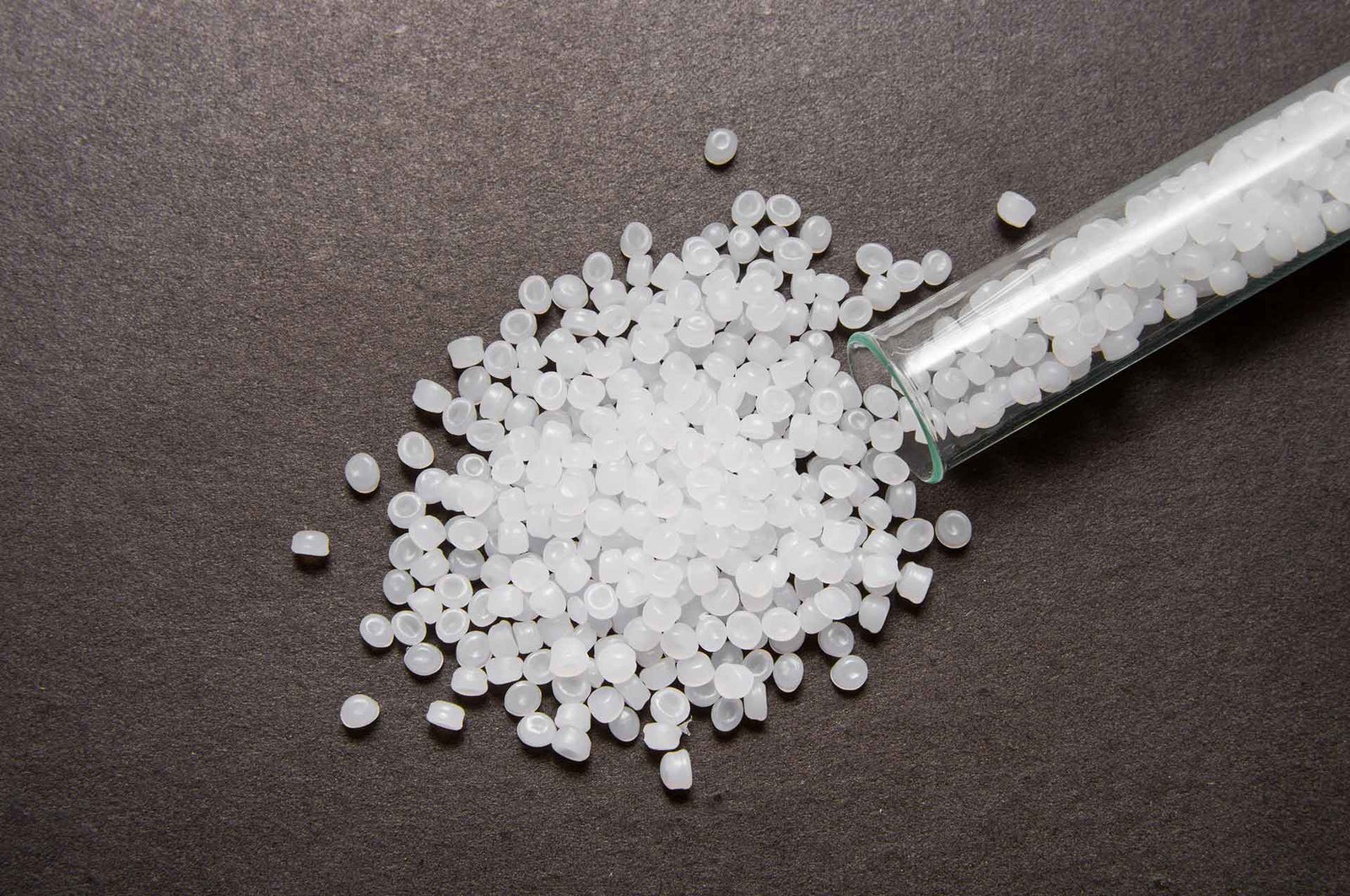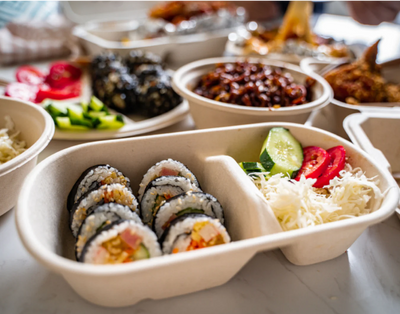PE plastic is the most widely used thermoplastic in the world with an annual output of up to millions of tons. This type of plastic is famous for its flexibility, durability, low price, and diverse applications in many different fields. Let's explore with EQUO about PE plastic, from its basic properties to the common applications it brings in the following article!
1. General introduction to PE plastic
NPE plastic is one of the most popular and important plastics, playing an undeniable role in our daily lives.
1.1. What is PE plastic?
PE plastic (or Polyethylene), is a popular and widely used polymer plastic, synthesized from ethylene monomer (C2H4). PE plastic has properties such as high durability, corrosion resistance, good electrical insulation, and heat resistance, making it an important raw material in the production of packaging, water pipes, toys, and plastic bags, and many other consumer products.

Source: Internet
>> Read More:
- Recycling Plastic Waste
- PLA Plastic: Everything You Need to Know
- 10+ Alternative Materials to Plastic: Perfect Solutions for the Environment and Humanity
- 20+ Recycled Plastic Straw Ideas: Simple and Easy to Do
- 10 DIY Plastic Straw Toys For Kids
1.2. Important properties of PE plastic
Polyethylene plastic has many important properties as follows:
- Good electrical insulation.
- Corrosion resistant, resistant to impacts from chemicals and acids.
- Water resistant and waterproof.
- High flexibility, good impact resistance, and easy to bend.
- Can be recycled and renewed into new products easily, helping to reduce the amount of plastic waste in the environment and promote sustainable development.
1.3. Is PE plastic toxic?
PE is a safe and non-toxic plastic when in contact with food and water. However, like any other material, the use of PE requires compliance with safety regulations and manufacturer's instructions to ensure safety for human health and the environment.
Although PE does not contain toxic compounds such as PVC (polyvinyl chloride) or other toxic additives, in case of combustion, PE can emit gases that are toxic and harmful to health. Therefore, the handling and recycling of PE plastic needs to be done properly to avoid harm to the environment and human health.

Source: Internet
PE plastic not only brings diverse and convenient applications in daily life but also plays an important role in minimizing human impact on the environment. However, the use and disposal of PE needs to be done properly, while recycling and sustainable use are encouraged to minimize the negative impact on the environment.
2. How many types of PE plastic are there?
Polyethylene (PE) plastic comes in many different types, classified based on density, molecular structure, and physical properties. Here are some common types of PE plastic:
2.1. Low-density PE plastic (LDPE)
LDPE (Low-density polyethylene) plastic is widely used in laboratory equipment, plastic bags, packaging, and bottles. Among them, the most commonly made plastic bags or packaging bags are from LDPE plastic.
2.2. Medium-density PE plastic (MDPE)
Medium-density PE (MDPE) plastic has moderate density and hardness, higher than LDPE but lower than HDPE. MDPE is often used for applications that require durability and impact resistance, such as water pipes and gas pipes.
2.3. High-density PE plastic (HDPE)
High-density PE plastic (HDPE) is a type of plastic with high density and uniform molecular structure. HDPE is commonly used in many different applications such as manufacturing water pipes, packaging, toys, household appliances and many other products.
2.4. Linear low-density PE plastic (LLDPE)
Linear low-density PE (LLDPE) is a type of polyethylene plastic with a linear molecular structure, different from the nearly random structure of LDPE plastic. LLDPE generally has greater flexibility and durability than LDPE, as well as better impact resistance. This type of plastic is often used in the production of plastic bags, flexible packaging, and applications requiring high flexibility.
2.5. Cross-linked PE plastic (PEX or XLPE)
Cross-linked PE plastic (PEX or XLPE) is a form of polyethylene whose molecular structure is cross-linked by chemical bonds. This creates a plastic with outstanding mechanical properties, good elasticity, and high heat and chemical resistance. PEX is widely used in hot water pipes and heat pipes due to its heat resistance and insulation properties.
2.6. Ultra-high molecular weight PE plastic (UHMWPE)
PE plastic has an extremely high molecular weight, known as UHMWPE (Ultra-high molecular weight polyethylene). UHMWPE has a very large molecular weight, creating special properties such as high strength, abrasion resistance, and low friction. Because of this property, UHMWPE is often used in applications that require high sustainability such as in the aerospace industry, medicine (such as in the production of artificial intra-articular parts), sports (for example in the production of skid plates for skis), and in the production of wear-resistant machine parts. UHMWPE is also used in bulletproof and cutproof applications due to its high puncture resistance properties.
PE plastic has many different types, from LDPE to UHMWPE, each type has its properties and applications. This diversity of PE plastic has made it an important raw material in many fields.
3. Advantages and disadvantages of PE plastic
Polyethylene (PE) plastic has become one of the most used plastics in the world. However, like all materials, PE plastic also has its advantages and disadvantages.
3.1. Advantages of PE plastic
- PE is a waterproof material.
- PE withstands impacts from chemicals and acids.
- High flexibility, good impact resistance, and easy to bend.
- PE is a non-toxic material for humans and the environment if used properly.
- Can be recycled and renewed into new products easily.

Source: Internet
3.2. Disadvantages of PE plastic
- PE has a low melting point and is easily deformed when exposed to high temperatures.
- Limited heat resistance compared to some other plastics.
- Poor UV resistance.
- Vulnerable to scratches and abrasions.
- The surface of PE can be slippery, making it unsuitable for some applications requiring highly non-slip properties.
- The fact that PE plastic cannot biodegrade significantly worsens the issue of plastic pollution, leading to detrimental effects on the environment. Unlike biodegradable materials that break down naturally over time, PP plastic remains intact for extended periods, contributing to the accumulation of plastic waste in landfills, water bodies, and natural habitats.
Polyethylene (PE) plastic offers many advantages such as acid resistance, chemical resistance, and high durability, making it an indispensable material in many industrial and consumer sectors. However, it is also necessary to pay attention to disadvantages such as uneven plasticity and easy deformation if not handled properly. Because of these disadvantages, many people prefer natural products because they believe in their health and environmental benefits.
4. Common applications of PE plastic in life
Polyethylene (PE) plastic has become an indispensable part of our daily lives with many common applications, from food packaging to the production of household appliances and industrial applications.
4.1. Production of wrapping film and plastic food packaging
PE plastic products such as plastic bags, zip bags, food wraps, and freezer bags are often used to package and preserve food in stores, supermarkets, and homes. PE plastic is also used to produce protective layers in carton box packaging, helping to protect products against moisture, dust, and other external agents.

Source: Internet
However, many people believe that natural products are safer for health and the environment than artificial products. They claim that natural ingredients do not contain toxic chemicals, so will not harm users and will not negatively affect the ecosystem.
EQUO: Product line of natural ingredients, the perfect solution to replace plastic
EQUO offers a variety of environmentally friendly products that accompany you and help you easily replace disposable plastic products in your daily life.
EQUO products are made from 100% natural materials, do not contain plastic, and can biodegrade within 3-6 months:
- Plant-based straw set that decomposes itself: Made from coffee, bagasse, coconut, grass, and rice, safe for health, and completely compostable in the natural environment.
- Food containers: Made from sugarcane bagasse, which is a sustainable natural resource that is renewable and decomposes quickly. The outstanding characteristics of bagasse fiber lie in its durability, flexibility in packaging, and breathable and waterproof qualities.
- Utensils: This is a great choice for eco-friendly and durable tableware sets.
- Paper cups and lids with water-based coating: Using a water-based coating, instead of plastic (PP, PE, or PLA), helps the production process emit less carbon dioxide (CO2) and minimizes negative impacts on the environment during decomposition compared to regular paper cups. These cups completely decompose in the natural environment within 18 weeks and come in various sizes, suitable for a wide range of uses.
Let's join hands with EQUO to use environmentally friendly products. For more information about EQUO product lines, please visit the following link:
>> https://shopequo.com/collections

4.2. Production of kitchen utensils
Kitchen utensils such as cutting boards, food trays, food containers, cups, bowls, and chopsticks are often made from PE plastic. The toughness and ease of cleaning of PE plastics make them a popular choice for everyday use in the kitchen.

Source: Internet
4.3. Production of garbage bags
PE plastic is also used to produce garbage bags of different types such as regular black bags, colored garbage bags, recycled garbage bags, and biological garbage bags. PE garbage bags help facilitate the collection and transportation of waste, protect the environment from pollution, and help manage waste effectively.

Source: Internet
4.4. Production of waterproofing membranes in construction
LThis type of PE film is used to prevent water from seeping into construction structures, such as foundations, walls, and floors, helping to protect and increase the lifespan of construction projects. Water can cause many problems such as softening nails, rotting construction materials, and causing mold. PE film protects construction infrastructure and ensures sustainability and safety for construction projects in the long term.

Source: Internet
4.5. Production of agricultural mulch films
PE plastic is also used to produce mulch films in agriculture. These membranes are used to protect crops from weeds, insects, and harsh weather. PE plastic helps enhance growth and preserve the quality of gardens and agricultural fields.

Source: Internet
PE plastic (polyethylene) is present everywhere in our lives, from food preservation to infrastructure construction. Thanks to its diversity and versatility, PE plays an essential role in creating packaging, protection, and utility solutions for a variety of purposes.
PE plastic is flexible, cheap, easy to process, and has many applications in life. Thanks to these outstanding advantages, PE has become the most popular plastic in the world, used in the production of packaging, household appliances, industry, medicine, etc. However, the use of too much PE plastic also leads to environmental problems. Therefore, we need to use PE plastic reasonably and consciously and promote recycling to reduce plastic waste by using alternative products of natural origin such as EQUO products.


